-
Posts
4,687 -
Joined
-
Last visited
Posts posted by David Barnert
-
-
1 hour ago, ttonon said:
Your mention of the term "logarithmic" indicates you are confusing volume with loudness.
Not at all. Volume and loudness were furthest from my thoughts. I was talking (as I thought I made clear) about pitch and frequency. Each interval in pitch (additive) is associated with a multiplicative change in frequency. Therefore pitch varies with the logarithm of frequency.
If we arbitrarily assign a reference note to have pitch (P) = 0 and frequency (F) = f and count by half steps, when P=12 (an octave) F=2f. When P=24 (two octaves) F=4f etc.
So P = 12 x log(2) F
-
1 hour ago, Łukasz Martynowicz said:
As long as one side is supported, the other side can be operated with full, hand-strap like freedom and tightness. In my case the LH is always static. In the LH demo part earlier you can see the lap support attachment in action.
Thank you, Łukasz.
Am I to understand, then, that you never play standing? Or that your antler system is not useful for playing standing?
-
2 hours ago, ttonon said:
Thus, by its definition, one cent is 1/100 of the frequency interval between semitones...
That’s a little misleading. A cent (like the octave and the semitone) is a unit of pitch, not frequency. The relationship between pitch and frequency is not linear, it’s algorithmic. Adding pitch multiplies frequency. Each octave doubles the frequency, each semitone multiplies it by approximately 1.06, each cent multiplies it by approximately 1.00058.
-
Flanders and Swann wrote funny words to that same movement of the horn concerto. Here’s a video of them performing it.
-
 2
2
-
-
5 hours ago, Don Taylor said:
I have read about Łukasz's 'antler' handrests before but I don't really understand what they look like and why they work.
Surely you remember these photos that Łukasz posted in 2021 and 2022. He also promised a video, but if he ever posted it I missed it.
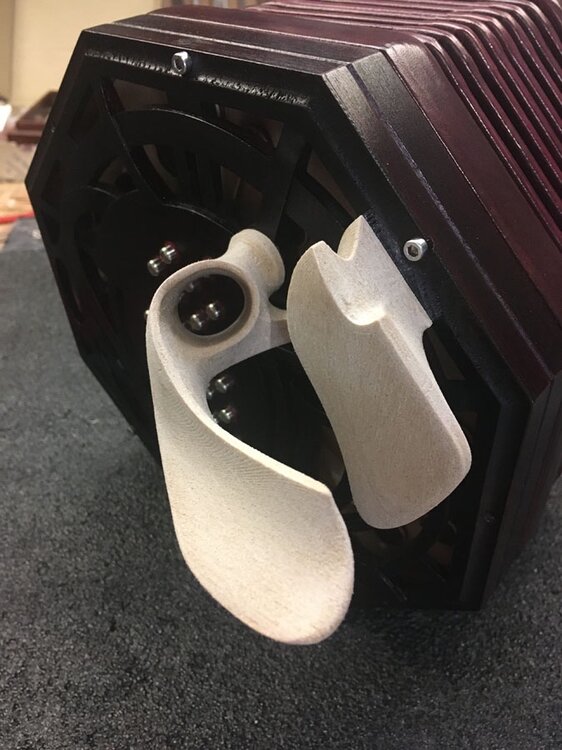
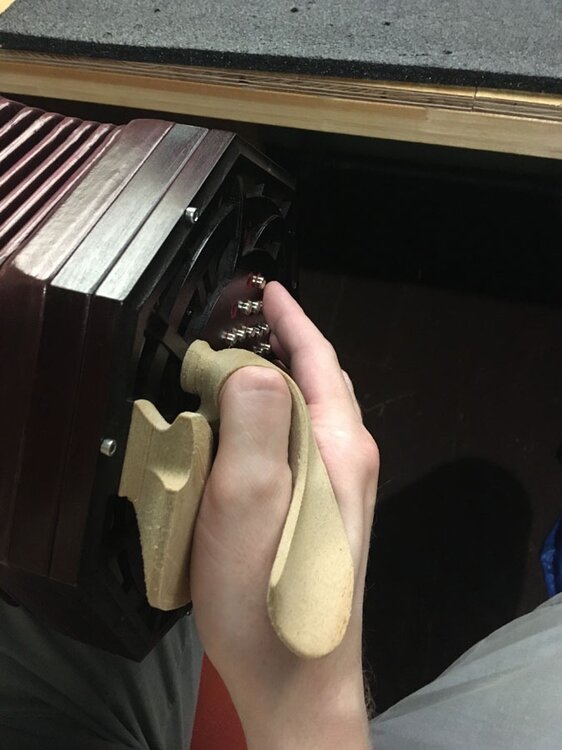
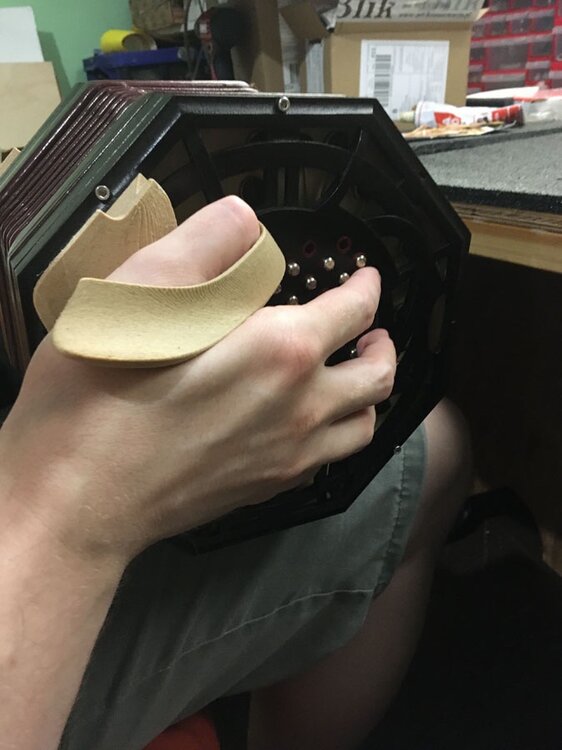
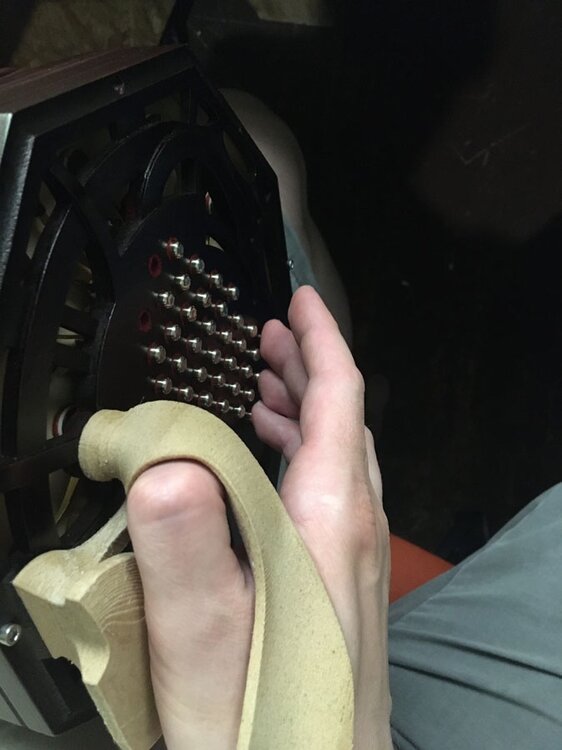
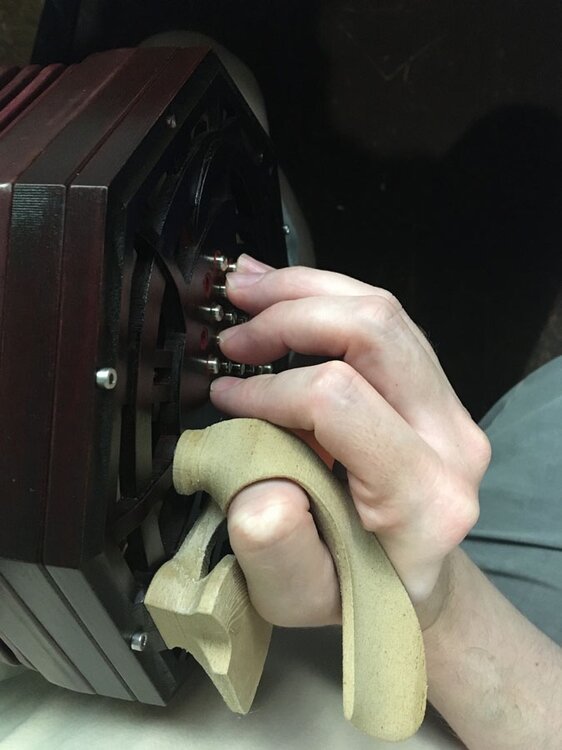

-
34 minutes ago, ttonon said:
But I wonder, why would a person with perfect pitch be annoyed by a piano that's tuned to a different standard than the world's orchestras? As long as the piano is tuned within itself, why would it matter, especially since the standardized pitch of middle A is a convention?
It didn’t bother him as a child, but it made a mess of things as an adult professional musician having to daily interact with pianos and orchestras that sounded out of tune to the ear he developed as a child.
-
14 minutes ago, ttonon said:
Of course, there are people fortunate enough to have perfect pitch
“Fortunate” may be the wrong word... I once knew an orchestral conductor and pianist who had perfect pitch but grew up in a household with a piano that was a quarter tone flat.
16 minutes ago, ttonon said:I in fact went through a tragedy by suddenly losing all my hearing in my left ear and about half my hearing in my right ear. It happened in two stages, over only a couple of weeks.
...
That happened about 10 weeks ago...
So sorry to hear about this.
-
12 hours ago, David Barnert said:
I started playing the cello at age 10 (many decades ago).
10 hours ago, Caroline said:One day, about a year and a half ago, my husband and I were joking around about the theme song from the "Pirates of the Caribbean," and I made the comment that I could probably play it on that concertina up on the bookcase.
I am one of the 457 cellists from 38 countries in this video (red plaid vest, tricorn hat, facing to the right most prominently at 1:39, top row), part of the Covid Cello Project.
-
 1
1
-
-
10 hours ago, Capitanya said:
I'd love to know what you made you choose the fabulously reedy concertina.
I started playing the cello at age 10 (many decades ago). A few years later my mother was taking recorder lessons but never really got anywhere with it. So there was a recorder laying around and I taught myself to play it. When I was getting ready to go to college my father asked me if I was planning on bringing one of his guitars to college and I said “why?” He said “bring a guitar.” So I did and quickly learned to play it. My senior year in college someone took me to a contradance and it was my first exposure to 32-bar fiddle tunes, which I fell in love with and felt I had to learn to play on whatever instruments I could get my hands on. In the next few years: pennywhistle, mountain dulcimer, hammered dulcimer, clawhammer banjo, pipe & tabor, etc.
All this time, I knew what an English Concertina was, but didn’t know there were other kinds and had no clue that I would someday play the concertina (although not the EC). Then one day in my early 30s (still quite a few decades ago), I was at a Fiddle & Dance weekend at Ashokan and Rich Morse was showing off his new Wheatstone Hayden duet concertina. He put it in my hands and told me how the notes were arranged. In no time I was playing Ashokan Farewell on it.
Unbeknownst to me, my girlfriend (now my wife of 37 years), who witnessed this, asked Rich how she could get one for me (this was before Rich opened The Button Box). It was delivered in a few weeks to my complete surprise (a Bastari—I bought the Wheatstone myself a few years later). It was instantly clear that this was what I had been looking for all along and most of the other “folkie” instruments quickly went on the back burner.
I still play the cello and the recorder. I play concertina in a contradance band, as musician for our local team of morris dancers, in pub sessions all over the English-speaking world, at the North East Squeeze-In every year for the past 30 years, onstage once in a legitimate theatrical production, and every other chance I get.
Does that answer your question?
-
 1
1
-
-
7 hours ago, Don Taylor said:
David, I think that Joe is referring to Danny's other Youtube videos about RC model aircraft.
You’re right. I hadn’t seen those. I have now.
-
8 hours ago, mandojoe said:
Wonder if he's thought about creating a mechanized, remotely-controlled concertina?
I know very little about him, but he doesn’t even seem to have a remotely-controlled video camera.
-
11 hours ago, mandojoe said:
thanks to Don Taylor for his version Danny Chapman's video
That wasn’t Don, it was me.
11 hours ago, mandojoe said:(which introduced me to a true button meister with whom I wasn't familiar)
Danny is a member of concertina.net with the user name RatFace. He hasn’t posted in over a year, but he was lurking earlier today.
-
8 hours ago, HansQ said:
symphonic violinists are forced to, and often manage, playing seated "straight” ... (Im an ex fiddler myself btw)
And I’m the principal cellist of the Delmar Community Orchestra, so I’ve known about orchestral musician issues much longer than I’ve known about concertina issues.
8 hours ago, HansQ said:To me it is strange ... that so few concertina players seem to prefer playing standing instead of seated since the handiness and symmetry of concertinas ought to favour being standing just as solo fiddling.
Not strange at all. When standing, your hands/arms are both playing the concertina and supporting its weight. When sitting, most of the weight is supported by a knee, leaving the hands free to be more expressive with the playing. The fiddle, on the other hand, is supported the same way whether sitting or standing. There is no difference to the job required of the hands and arms.
-
I learned Roslin Castle from Danny Chapman’s video (he plays it in D minor on an English but makes it sound like a Duet). So I adapted it for the Hayden. This is how I play it on a 46-key Hayden. I think it’s playable on an Elise.
-
 1
1
-
-
18 hours ago, HansQ said:
...you may be forced by the environment to sit straight
I can’t help but be reminded by this of a record album I borrowed from the library some 40+ years ago (the picture below is from the web—I don’t still have it). Gunther Schuller conducting the New England Conservatory Country Fiddle Band. As I remarked to a friend, “You could hear them sitting up straight.”

-
FYI, in case anybody isn’t clear, Premier League Football is what Americans call soccer, not American football.
-
2 hours ago, papawemba said:
Maybe you could try 3D print Jay's concertina
If you don’t know where to find them, look here.
-
 1
1
-
-
3 hours ago, Mark Alan Lovewell said:
I need to look deeper. The website www.angloconcertina.org recommended isn't in service. Anyone got a suggestion.
@Dan Worrall is a member of concertina.net. Why not send him a private message?
-
4 hours ago, fred v said:
At sessions they ask me to play an A note fro the fiddles. I like playing an A flat and watch everybody stop and look at their instrument and bow it again. LOL
I was playing cello at an orchestra rehearsal many years ago, the last rehearsal before the concert, and we were playing Schubert’s “Great” 9th Symphony in C. The piece starts with a 7+ measure horn solo, with the violins, then the rest of the orchestra coming in in the 8th measure:
For the same reason @fred v describes above (ie., for grins), the horn player played the solo in C# rather than C and nobody noticed until the violins entered and desperately tried sliding their fingers up the strings to get in tune. It all broke down at that moment and we started again in C natural.
-
 1
1
-
 1
1
-
-
6 minutes ago, JeffA said:
So if I interpret your approach correctly, you would use your index finger for the tonic "C" when playing in C and then use it on the next row over "D" or "G" when playing in those keys?
Sure. That’s a primary selling point for the system: same fingering for each key. Learn a tune in one key, play it in another key by moving your hand somewhere else and using the same fingering.
9 minutes ago, JeffA said:Still, what a cool instrument. Everything I wanted to have in a concertina: unisonoric, with harmonizing capabilities on the left hand to support and counter balance the melodic right hand.
My thoughts, exactly.
-
That’s a lot of moving parts!
-
Actually, Brian Hayden recommends 234 / 1234 / 2 for a major scale in the keys where it is possible (ie., you don’t run off the end). Rich Morse used to play that way and it was quite effective. I start with the first finger for any major scale (again, where it is possible), which is probably a bad habit, but I’ve been doing it for 35 years and I’m unlikely to change now. Another bad habit is I often play the 6th and 7th notes of a major scale with the same (3rd) finger, slid from one to the other, rather than use the 4th finger.
If I’m understanding you correctly when you say “button rows” I would think you’re limiting yourself unnecessarily and will soon run out of fingers as you stray from the more familiar keys. You play the fiddle. I play the cello, and I certainly don’t limit myself to a finger position for each note. I spend a lot of time in 2nd, 3rd or 4th position, playing each note with whatever finger makes what’s coming next most convenient to play. Sure, it means that a given dot on a page of music might be played with any of several fingers, but that’s a small trade-off to have to be able to play passages that wouldn’t be possible if I stayed in 1st position.
-
I often imitate the sound of a European police car by playing F#4 and G4 simultaneously alternating with B4 and C5 simultaneously.

Sometimes, to imitate the doppler effect of a passing police car, after a few cycles of the above I change the G to an F and the C to a Bb.
-
 1
1
-
-
I love the kit! I play for a Morris team as well. Cotswold in the Spring, Border in the winter, but we wear less extravagant rag coats and hats.

In answer to your question, I have seen two people waltzing with each other while each played an accordion strapped to the other’s back.
-
 2
2
-


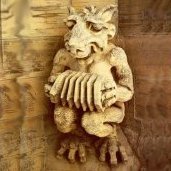
Effect of temperature on tuning
in Instrument Construction & Repair
Posted
I was trying to express it without the subscript required to do it correctly, but I now realize it is possible to render subscripts in this medium. So this is what I meant:
P = 12 log2 (F) or Pitch is twelve times the logarithm (base two) of the frequency.
Correct.
Exactly. It is 12 semitones higher. Additive, not multiplicative.
To get from one octave to the next you ADD 12 semitones to the PITCH or you MULTIPLY the FREQUENCY by 2. But you DO NOT multiply the pitch.